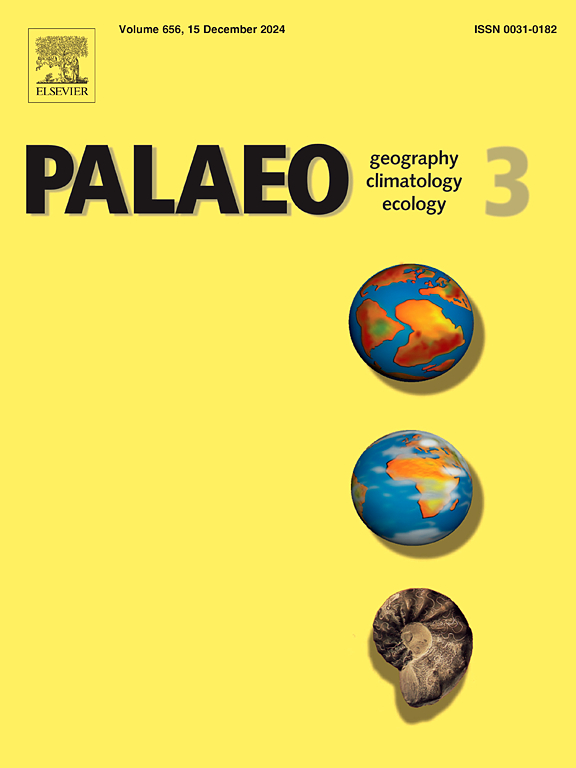Tectonic setting, paleoenvironment and REE source of the Lower Cambrian phosphorites, Yangtze Block (South China)
IF 2.6
2区 地球科学
Q2 GEOGRAPHY, PHYSICAL
Palaeogeography, Palaeoclimatology, Palaeoecology
Pub Date : 2025-02-17
DOI:10.1016/j.palaeo.2025.112821
引用次数: 0
Abstract
The phosphorites of the Lower Cambrian Gezhongwu Formation on the Yangtze Block of South China (specially Zhijin area of Guizhou province) yield exceptionally high rare earth elements (REE) contents up to 1700 ppm, which could serve a potential source of REE industry. The tectonic setting and paleoenvironment of the REE enrichment of the Gezhongwu phosphorites and the REE source in these phosphorites, however, remain poorly constrained. This study conducts a comprehensive analysis of lithology and bulk-rock major and trace elements (including REE) on the Ediacaran-Cambrian (E-C) successions of three sections (Gezhongwu, Zhalagou and Jiebeidong) in different depositional settings of the upper-middle Yangtze areas, in order to elucidate the tectonic setting, paleoenvironment and the REE source of the Gezhongwu phosphorites in the Zhijin area of Guizhou province. The Post-Archean Australian Shale (PAAS, subscript N)-normalized REE patterns of the E-C intervals in the study area exhibit seawater-like signatures (e.g., minor LREE depletion, HREE enrichment and positive La anomalies). In addition, the E-C successions in certain sections share positive Eu anomalies ([Eu/Eu*]N) of varying degrees (e.g., Zhalagou) and relatively low Y/Ho ratios (average 30; Zhalagou and Jiebeidong sections), suggesting the variable contributions of high-temperature hydrothermal fluids during the E-C period. Additionally, the negative Ce anomalies ([Ce/Ce*]N) with a wide range (0.32–0.87) of the E-C strata and the reported redox fluctuations in the South China indicate fluctuating oxygenation conditions across different depositional settings and high redox heterogeneity. The lack of correlation between total REE contents (ƩREE) and Zr and Th of the Gezhongwu phosphorites in the Zhijin area implies a minimal contribution of terrestrial sources. Considering the tectonic setting and the REE profiles of the Gezhongwu phosphorites in the Zhijin area, it is hypothesized that a mixture of seawater and varying amounts (0.1 % ∼ 1 %) of high-temperature hydrothermal fluids is likely the primary source for the REE enrichment of the Gezhongwu phosphorites, and high-temperature hydrothermal fluids might contribute a significant, yet potentially underestimated, quantities of REE. This study offers valuable insights into understanding the tectonic setting and paleoenvironment of REE enrichment in phosphorites and their sources in the geological records.
求助全文
约1分钟内获得全文
求助全文
来源期刊
CiteScore
5.90
自引率
10.00%
发文量
398
审稿时长
3.8 months
期刊介绍:
Palaeogeography, Palaeoclimatology, Palaeoecology is an international medium for the publication of high quality and multidisciplinary, original studies and comprehensive reviews in the field of palaeo-environmental geology. The journal aims at bringing together data with global implications from research in the many different disciplines involved in palaeo-environmental investigations.
By cutting across the boundaries of established sciences, it provides an interdisciplinary forum where issues of general interest can be discussed.

 求助内容:
求助内容: 应助结果提醒方式:
应助结果提醒方式:


